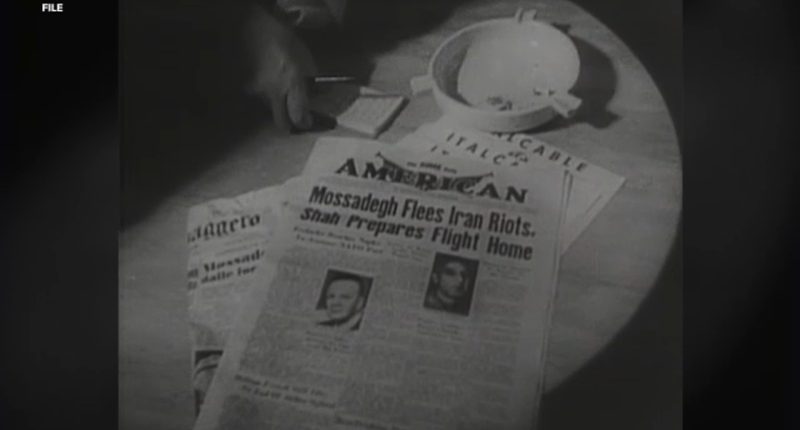Share this @internewscast.com
The United States’ relationship with Iran is characterized by a long and intricate history of conflict. The recent U.S. strike on Iran’s nuclear facilities, which led to Iranian retaliation, is just the latest chapter of a fraught history that extends back over seventy years.
In 1953, the U.S. helped overthrow Iran’s prime minister and backed the Shah — a move that sparked decades of mistrust.
In 1957, the U.S. and Iran entered into the Cooperation Concerning Civil Uses of Atoms Agreement, which established the groundwork for Iran’s nuclear program.
By 1979, the Islamic Revolution had overthrown the Shah. This resulted in the hostage crisis at the American embassy, heightened tensions, and the severance of diplomatic ties.
“When the Shah was overthrown, the American perfidy in what they did in 1953 reemerged in the national consciousness of Iran,” said James Gelvin, a UCLA professor of Middle East studies.
Iraq invaded Iran in 1980, and the U.S. provided economic and military support to Iraq.
Iran was labeled a state sponsor of terrorism by the United States throughout the 1990s and went under strict sanctions. In 2002, George W. Bush described Iran as part of the “Axis of Evil,” along with Iraq and North Korea.
In 2015, a breakthrough happened with the Iran nuclear deal. Iran agreed to reduce uranium enrichment in exchange for sanctions relief.
Three years later, President Donald Trump withdrew from the deal, reimposed sanctions, and tensions escalated again.
“‘OK, look, we will not pursue nuclear weapons anymore if we can get rid of the sanctions,’ is a bargaining position for the Iranians. What the Americas want, of course, is they want to make sure Iran doesn’t have a nuclear weapon,” Gelvin said.
In 2020, top Iranian general Soleimani was killed in an American drone strike. Iran responded with missile strikes on U.S. bases in Iraq. The world braced for war, but conflict was narrowly avoided.
Now, in 2025, nuclear talks were back on. Iran wanted sanction relief, and the U.S. wanted tougher limits on enrichment and missile development.
The negotiations came to a halt just two days before the U.S. and Iranian delegations were set to resume talks, following what Israel called a “preemptive strike” attack on Iran.
Trump announced a ceasefire agreement on Monday, but on Tuesday, he accused both nations of violating the agreement.
It now raises the question of what’s next in the region? The stakes are very high as a ceasefire deal could stabilize the region and bring peace, or its collapse could trigger a new wave of further escalations.
Copyright © 2025 KABC Television, LLC. All rights reserved.
















